Norway remains a world leader in electromobility
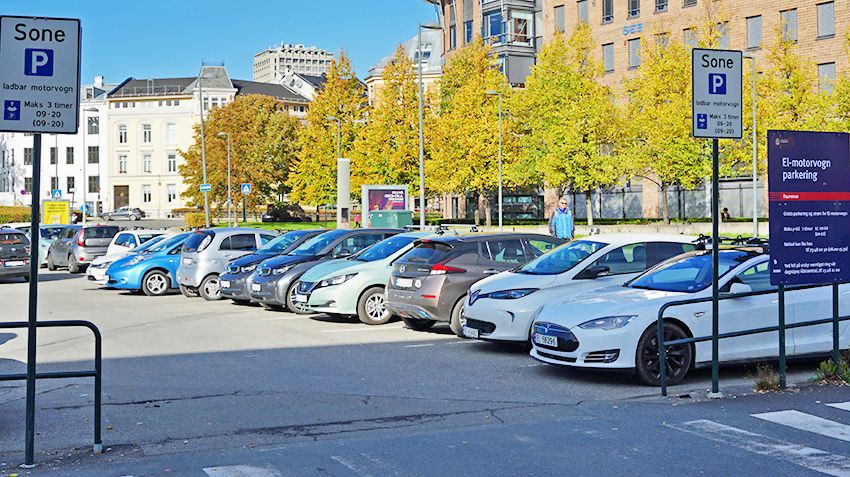
10 October 2019
The share of electric and hybrid cars in Norway reached 65% of the market
In September, electric cars and hybrids set another record penetration
In September 2019, the registration of pure electric vehicles (BEV) in Norway increased by 27% compared to September of last year, while plug-in hybrids (PHEV) continue to fall relentlessly, showing minus 28%, also fell by 9% and unconnectable conventional hybrids (HEV). However, hybrids were not alone in their downward trend, as ordinary passenger cars with diesel engines (market share in the current September fell to 12% against 16% in the beginning of the year) and gasoline engines (10% last month, compared with 16% a year ago) continued to fall, while BEV (share in September reached 55% against 45% a year ago) continue to advance on all fronts.
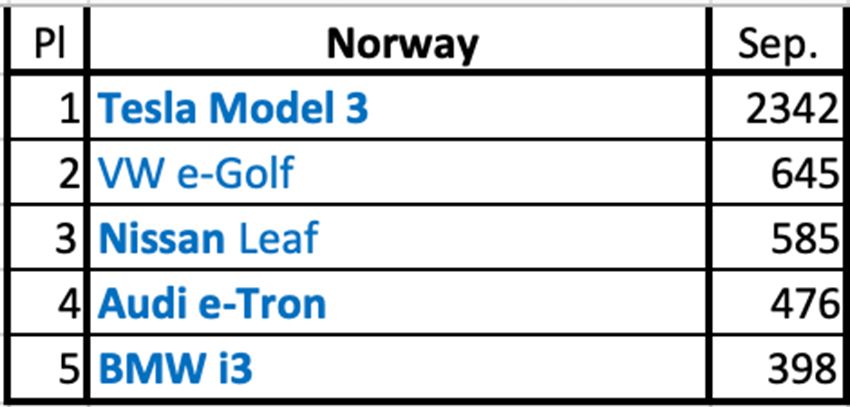
All the Top 5 new cars in the Norwegian market in September were pure electric vehicles (BEV)
The proportion of PEV in September reached 65% of the market, which is 9% higher than the result of the beginning of the year, then constituted 56%, which is quite safe to assume that this proportion will continue to rise until the end of the year.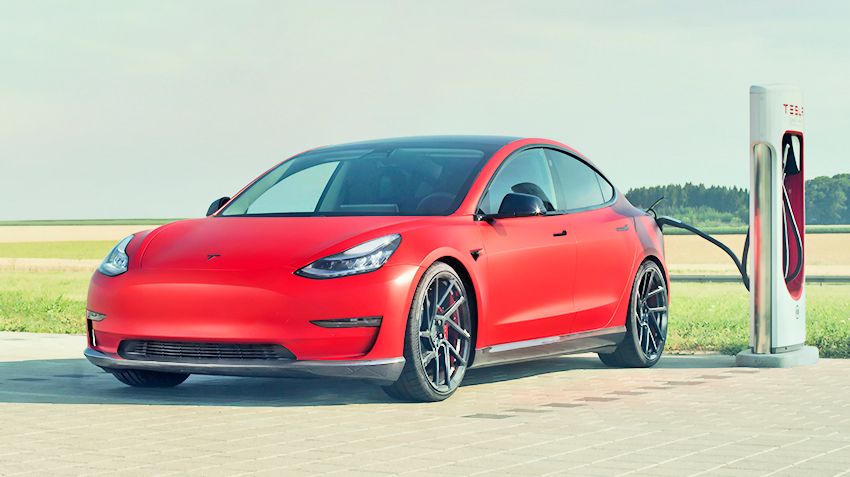
In the ranking of the Top 10 models for Tesla Model 3 is the undisputed winner, putting 2342 machines
However, will show whether the last quarter of this year, the real level of demand for this mid-size sportsedan, as most imports of the American model in the Old world reserved for the Dutch market which, thus, can leave the rest of Europe on a starvation diet. If this happens, it is strongest for Model 3 in Norway will be the first quarter of next 2020, which can be a serious support for the brand Tesla in General, owing to the market entry of the German electric car VW ID.3.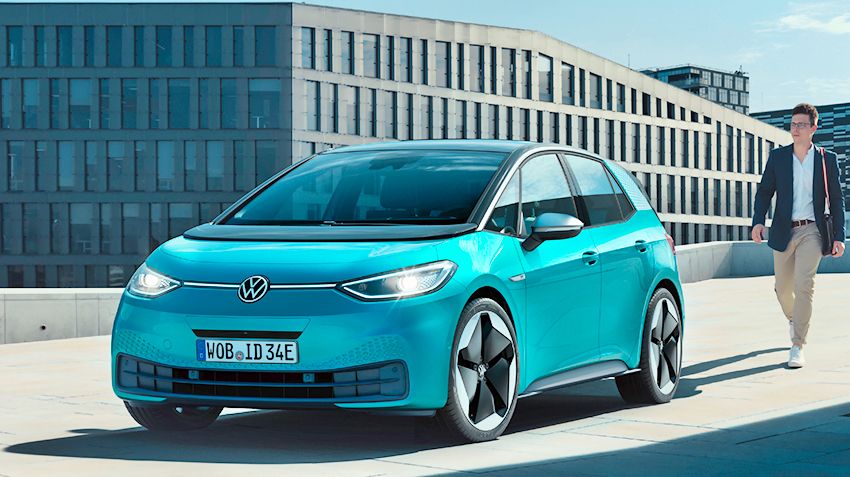
The newest electric car ID.3 from Volkswagen should give the Germans the lead on the horizon of the global automotive industry
Speaking of Volkswagen, despite all the talk about the new electric car ID.3, even not the new e-Golf continues to impress, reaching the second position, with 645 units.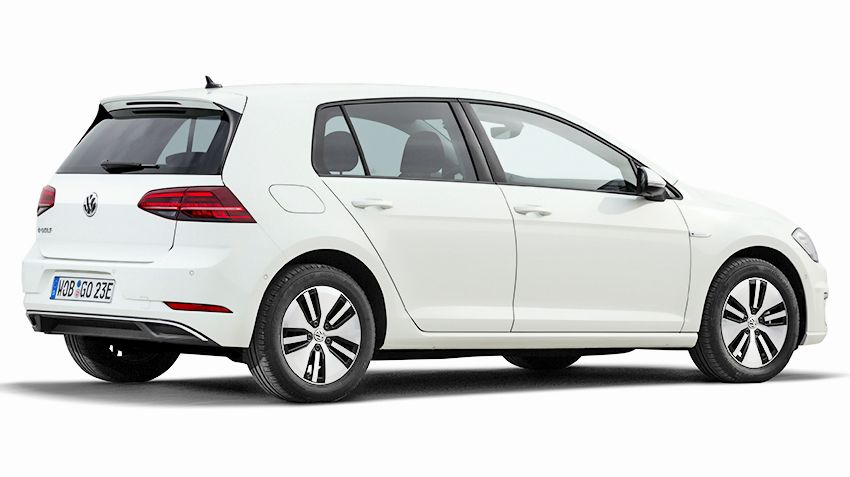
Electric VW e-Golf ahead of the arrival of the successor (ID.3) proves that he still has a gunpowder in powder flasks
surpassing the Nissan LEAF, which despite the implementation of 585 units. had to agree with the last spot on the podium.
Japanese Nissan LEAF even in the version of e+ becomes irrelevant in Norway?
Electrocreaser Audi e-Tron again entered the Top 5 with 476 units, and soon, reportedly will enter the market a cheaper version, which could bring this model into the top three.
Electrocreaser Audi e-Tron can still climb in the Norwegian ranking to a higher place
In the ranking of three quarter of 2019 all top positions seem to be stable, although the Audi e-Tron from his fifth place else can quite to the end of the year to threaten the 4-th position of the BMW i3, as well as Kona Hyundai EV in the 8th position on 7-th place, i Jaguar-Pace.Electrocreaser Tesla Model X with its 11th positions also could surprise and enter the Top 10, but again, this action will depend on how quickly Renault will be upgraded Zoe.
At the bottom of the rating of the premium SUV Volvo XC90 PHEV moved up one position to 18th place, which was good news for the PHEV in General.
Another PHEV – PHEV Mini Countryman included in the Top 20 thanks to the 96 units of registrations last month, walked still in the shortage Kia Niro EV that brought the number of PHEV in the first twenty to 7 of which 4 of the Volvo brand. In addition to the models of the Top 20 are worthy of mention Mercedes EQC, which very slowly began to increase the supply, registering 48 in September.
As for the rating of manufacturers, Tesla remains the undisputed leader (market share of 28%, an increase of 2%), followed by Volkswagen (13% of the market), but BMW (10% of the market, growth of 1%) managed to win 3rd place after Hyundai and Nissan, with 9% market share each, but the German automaker still has to overcome many obstacles if he is willing to retain third place.
September was a strong month for the unconnectable hybrids (HEV), which was due to only two models Toyota – RAV4 PHEV on 5th position and Yaris in 10th place.
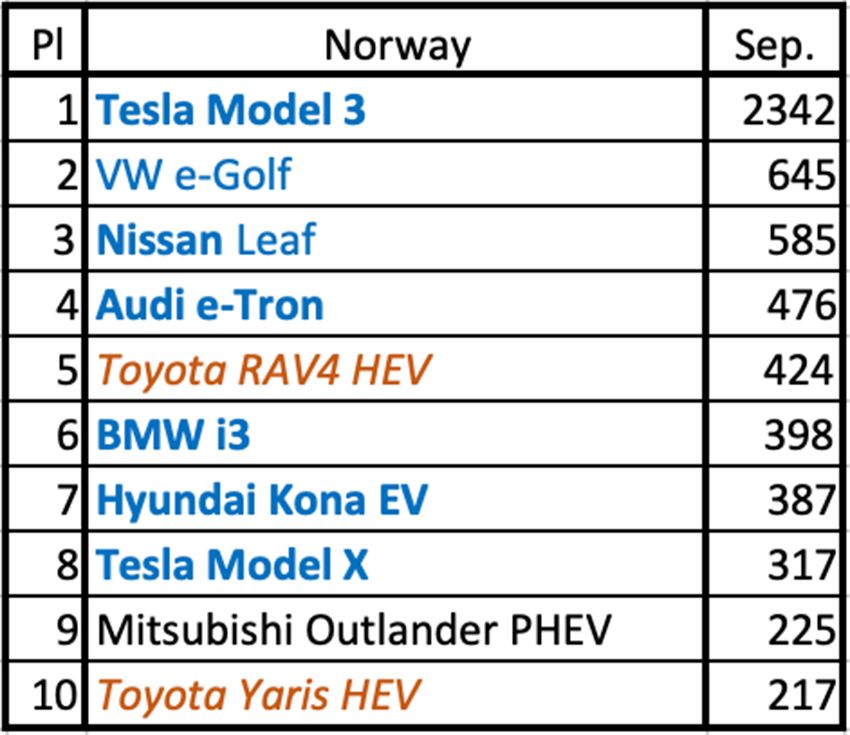
But all the first 4 places in the ranking of the automotive market in General has taken electric vehicles (BEV), which also remained the majority and in the Top 10 with 7 positions
In addition, the Top 10 remained the one model PHEV – Mitsubishi Outlander PHEV on the 9-th position – low enough for approval of the thesis about the continuation of the trend in the displacement plug-in hybrids from a segment of the PEV market in General.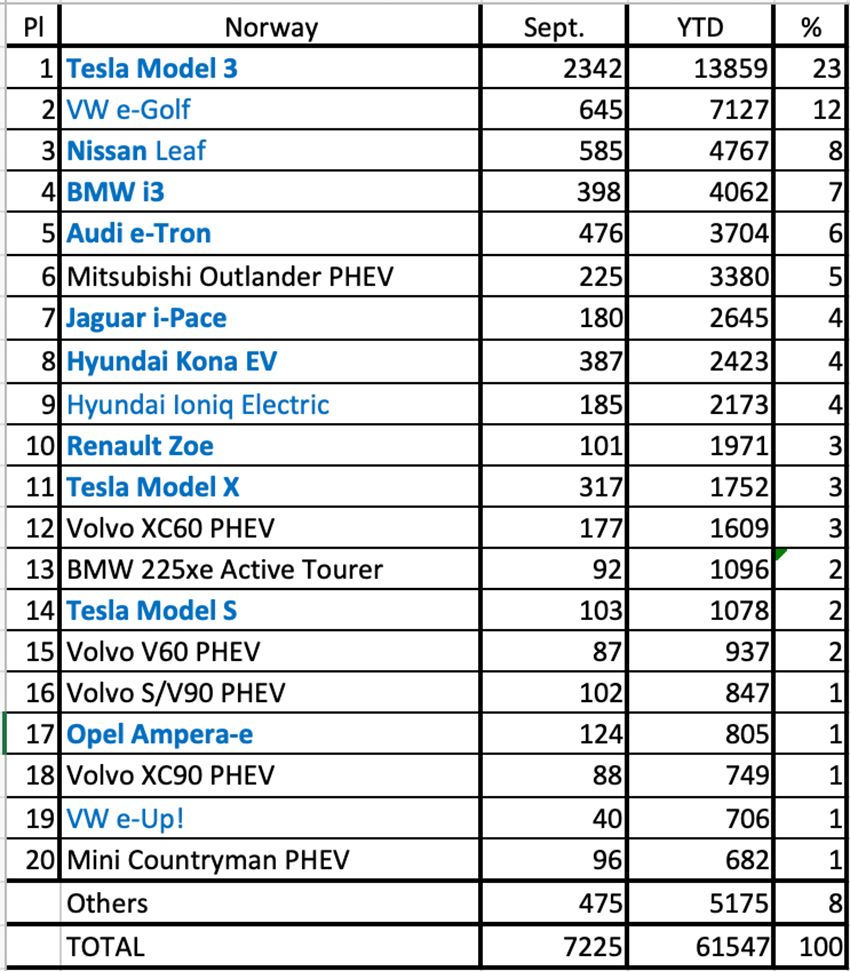
Norway goes first to the third stage of formation of the market of electromobility

By the way, the PEV's Park in Norway, one of the largest in the calculation per capita, of course.
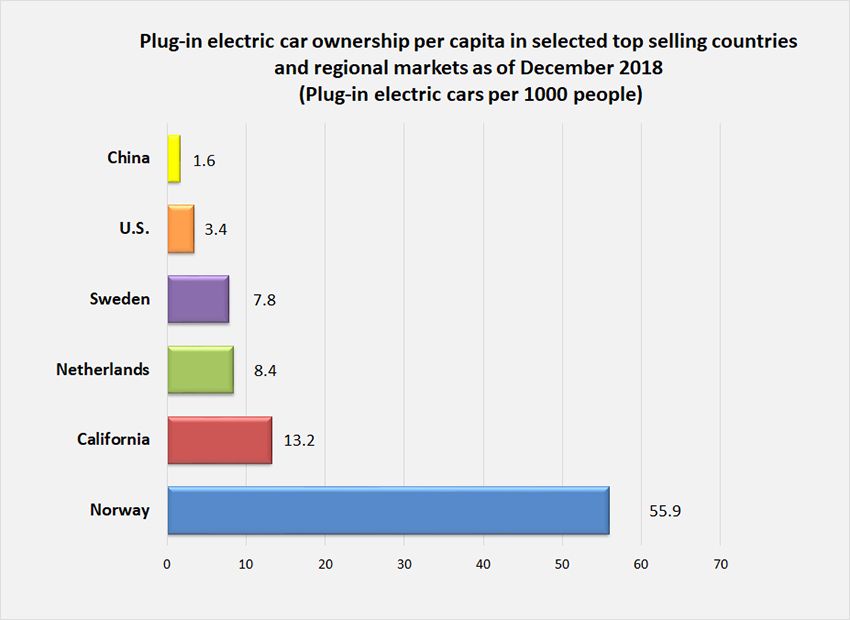
In March 2014, this Nordic country became the first in the world where every hundredth operated car was an electric vehicle or plug-in hybrid. The proportion of PEV exceeded 5% by the end of 2016 and 10% by October 2018. The share of pure electric vehicles in the Park reached 5% by the end of 2017, and after another year the Norwegian Park BEV reached 200 thousand.
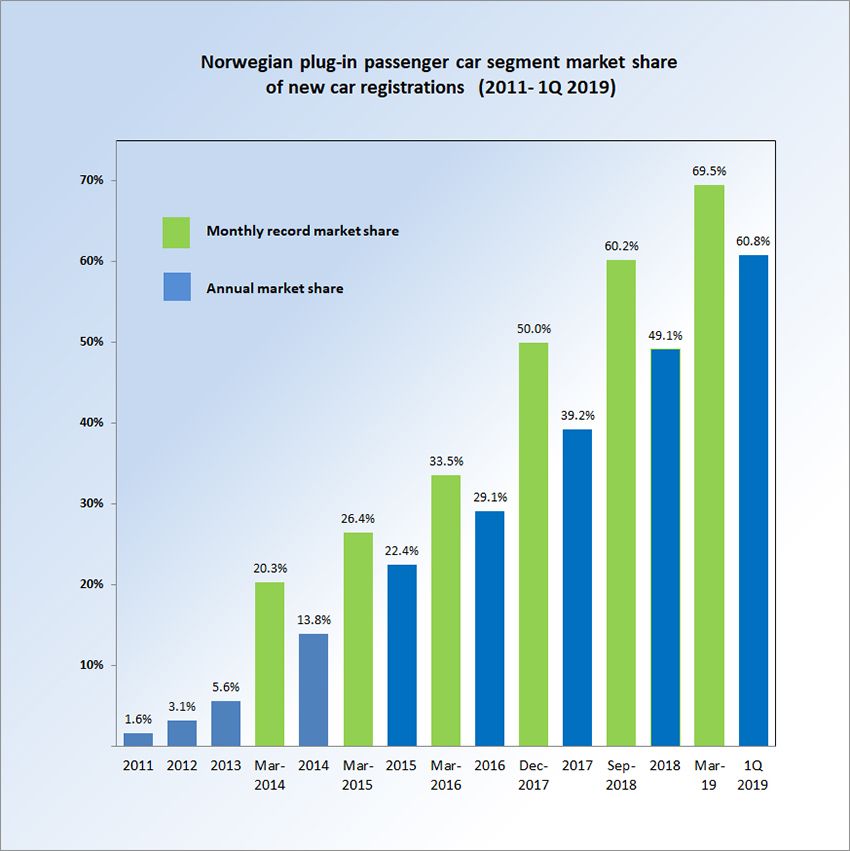
The proportion of PEV on the market of new passenger cars amounted to 29.1% by the end of 2016, to 39.2% by the end of 2017 and 49.1% by the end of 2018.
Electric car Nissan LEAF for the first time in the history of the world car market has become the most popular model not only in its segment PEV, but in General, on the national market, ahead of conventional cars with internal combustion engines (ICE).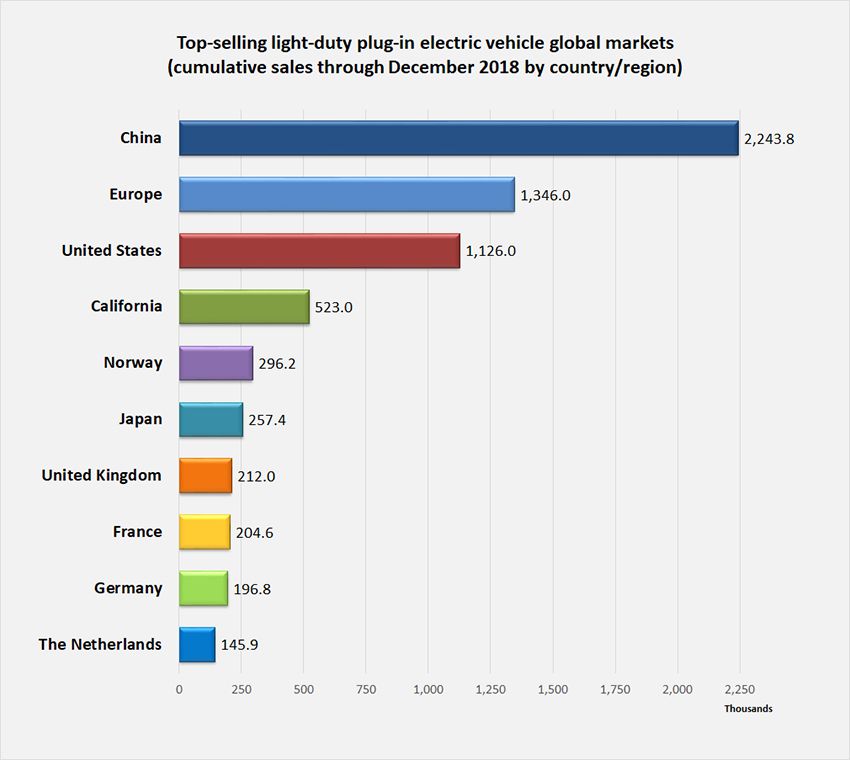
Park of electric vehicles and hybrids in countries around the world to the end of 2018 – Norway here looks quite decent with only 5 million population
In January 2019 was registered for the 50-seat electric car of this model (including new and imported used cars, the ratio is approximately 3:1).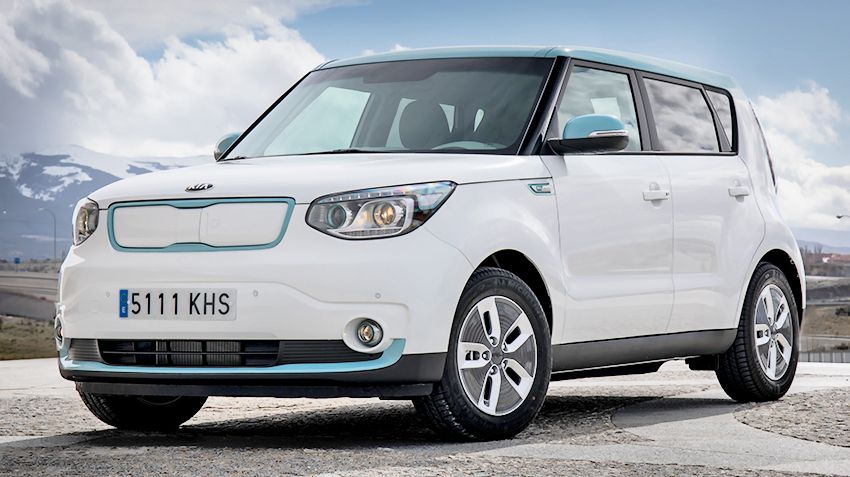
Electrocreaser e KIA-Soul mainly second-hand imported from Germany
Quotas for this model for Norway is insufficient, but in Germany, KIA gets for their "sale" (at least on the side to another country, incidentally, is not a member of the EU) tax credits, formally maintaining the level of CO2 emissions have "implemented" the new machines.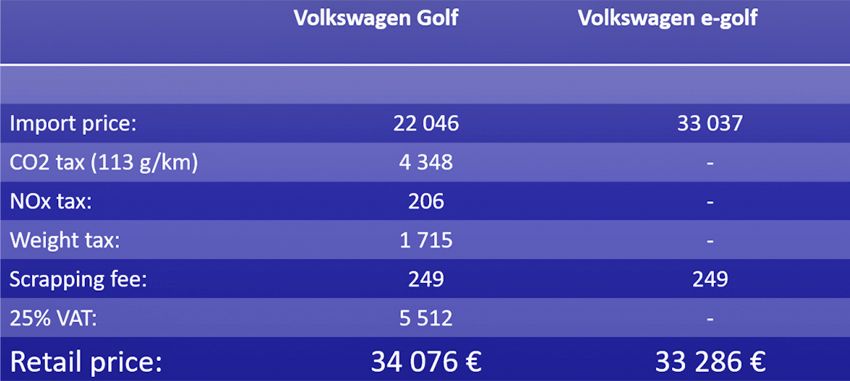
Compare prices on a normal VW Golf and electric e-Golf, including taxes – it turns out that the Norwegian electric car for cheaper petrol counterpart
a Progressive tax system in Norway makes most of the models of electric cars more expensive than comparable gasoline models, even if the prices of imported electric cars is much higher. This is the main reason why the Norwegian electric car market is so successful compared to any other country.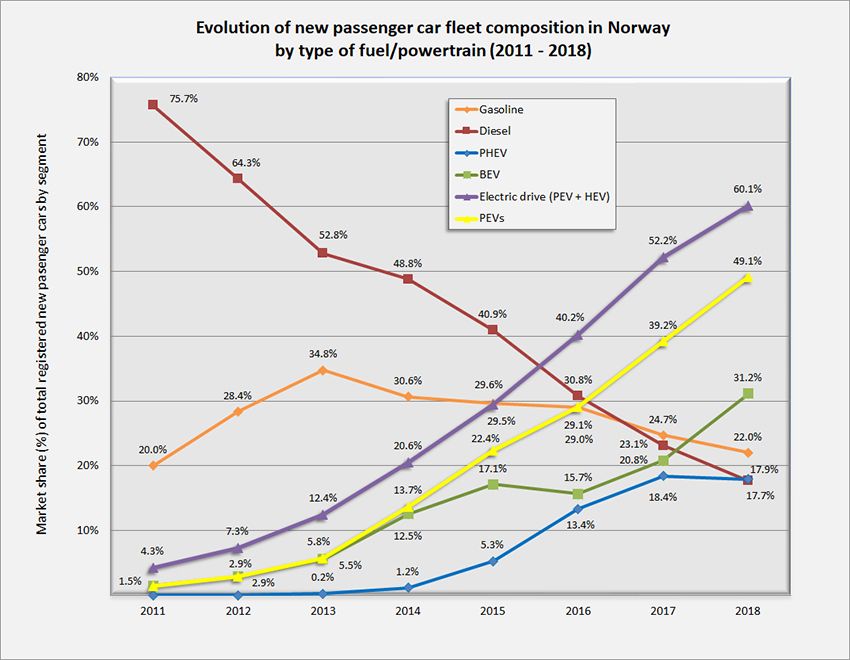
Graph of distribution of different types of engines in passenger cars in Norway
Anyway, due to the appearance in the Park a critical mass of electric vehicles in Norway for the first time, the world has created the conditions for the third stage of a radical restructuring of the market for a vehicle, in which all former leaders of the car market will be forced to either radically redesign their product lines (PEV instead of gasoline and diesel ICE) or simply leave this prestigious and solvency of the national market.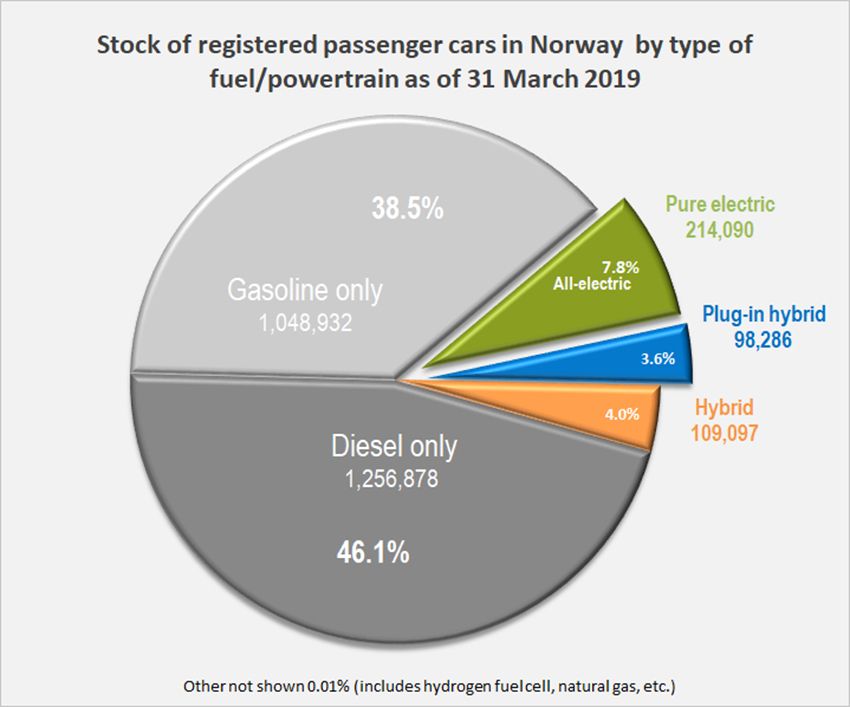
Diagram of distribution of engine types in the Park Norwegian cars at the end of the first quarter of 2019
as of the end of the first quarter of 2019, the share of Park PEV was already at 11.4% or 312,4 thousand of which BEV – 214,1 thousand and 98.3 thousand PHEV. If we add another 4% (109,1 thousand) unconnectable HEV, the share of "green" vehicle in the Park Norway has already exceeded 15%. Interestingly, the share of vodorodnaya (FCEV) and LPG cars had less than 0.01% of the Park. The share of gasoline ICE to 38.5% of the Park (1 048,9 million), but diesel ICE still dominate with 46.1 per cent (1 256,9 million).It is characteristic that the Norwegian fleet of electric cars more and actually the purest in the world, as 98% of the country's electricity is generated by hydropower plants, by definition, related to "alternative" energy. As a result of rapid and large-scale introduction of electric vehicles and hybrids Norway was able to reach the European average CO2 emissions from new cars at the level of 85 g/km three years ahead of schedule. The Norwegian government stimulates the introduction of electric vehicles, since 1990. So at present, the total amount of benefits (free Parking, free ferries and high-speed roads, reduced or zero taxes, etc.) for owners of electric vehicles in Oslo (not counting the benefits of movement for dedicated bus lanes on roads), is valued at $8200 that many observers considered to be excessive and even criticism from, for example, the same rafters (a common service in the country is rugged fjords), losing because of the electric cars of their income.
PS Here's why Norway is the most interesting and illustrative (i.e., pilot) market to the entire world on the introduction of electric vehicles. I think that the achievement of electric vehicles penetration in 100% of the new car market in this country will not lead to the fall of interest market, as will the Park replace the traditional "fossil" cars (ICE), as well as the problem of gradual deprivation of privileges (primarily in the Park, ferry and bus lane) owners of electric vehicles, which became the ruling the majority on the roads of this Scandinavian country. And the competition on a purely "electric" market, too, will give enough reason, because in other European countries yet, despite the high numbers of sales of the electric cars on the roads there are actually still quite rare..
|
|
|
Element was not found.








